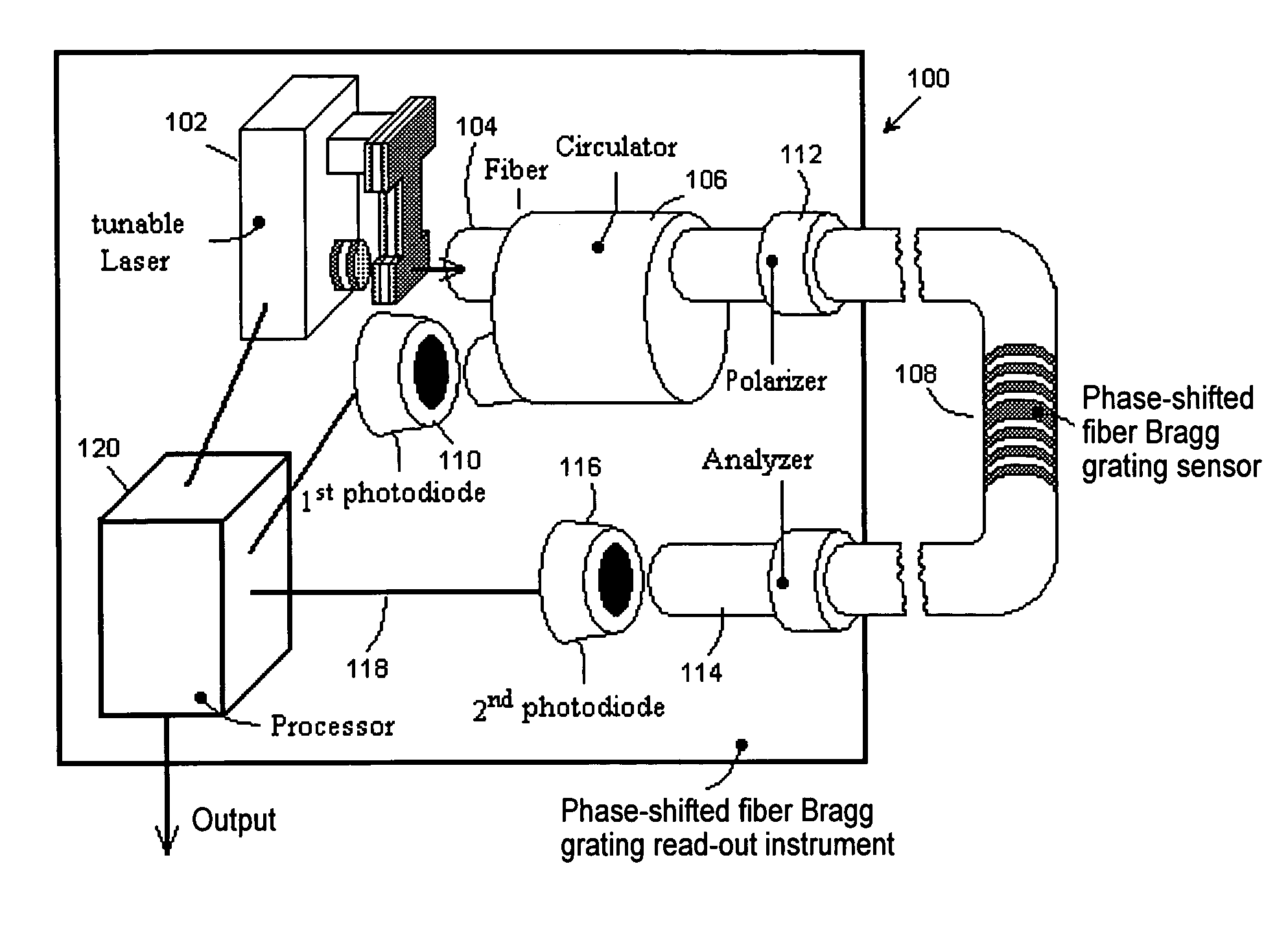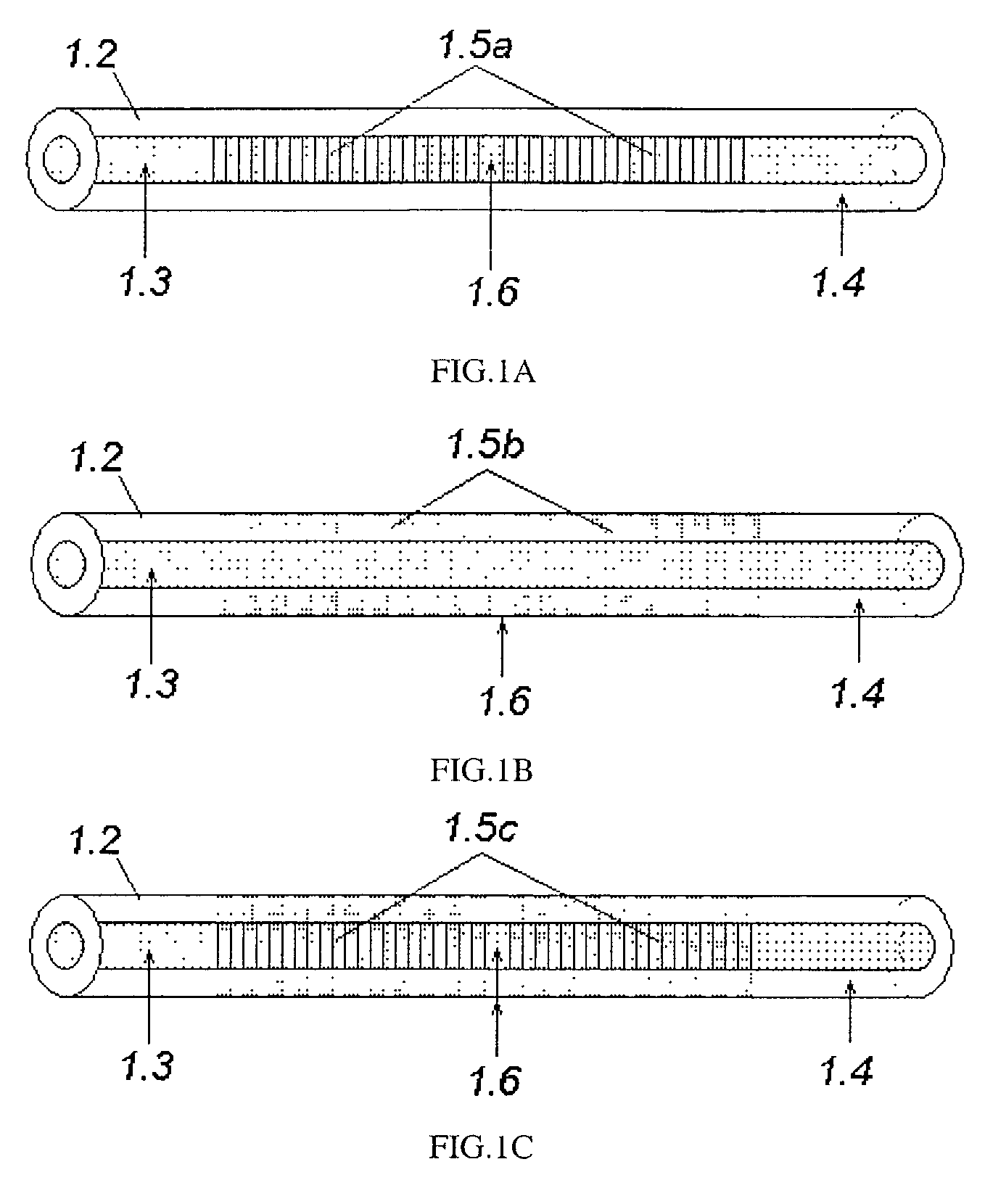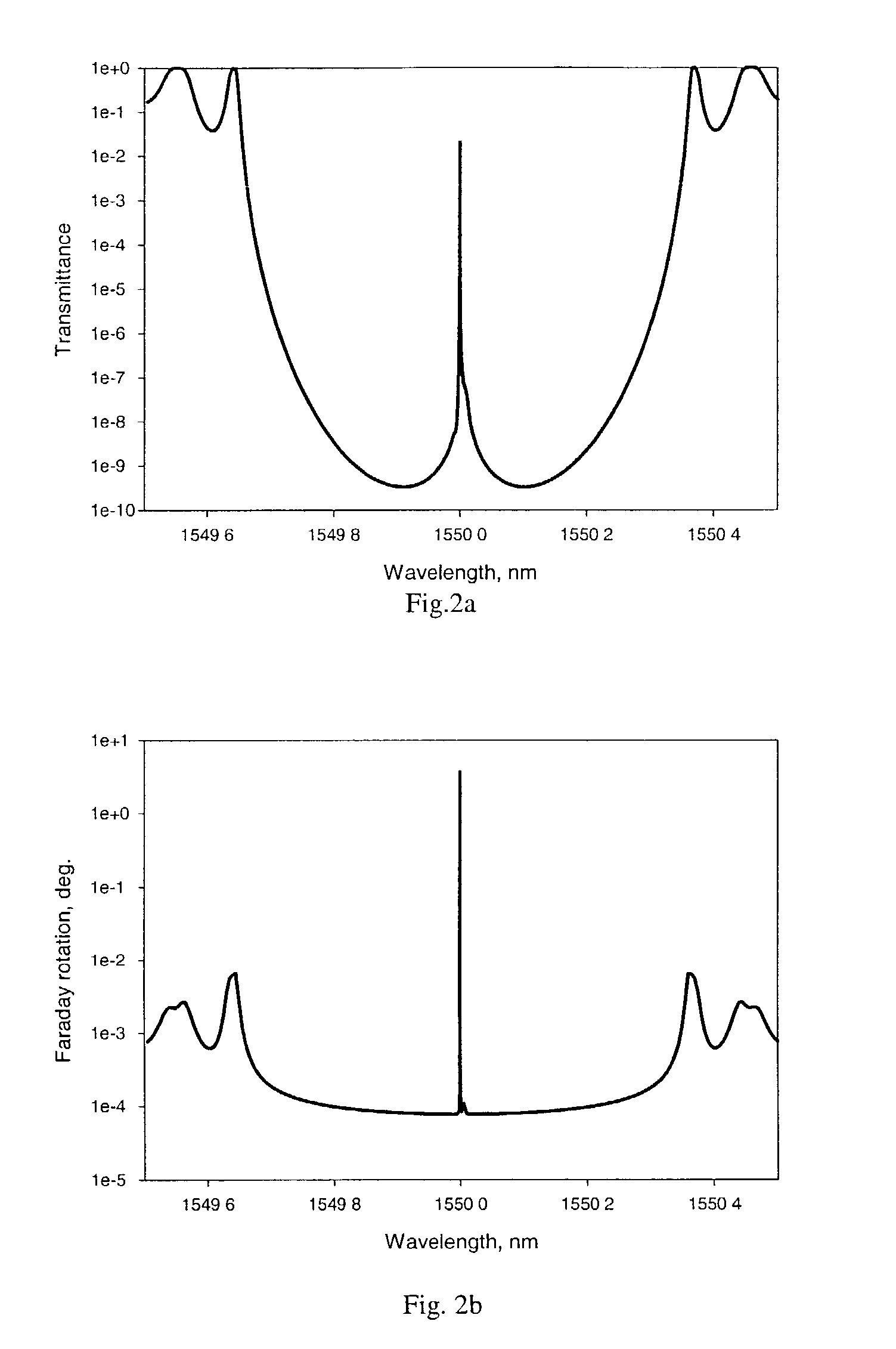Magneto-optical sensing employing phase-shifted transmission bragg gratings
a transmission bragg grating and phase-shifted technology, applied in the field of fiberoptic sensing applications, can solve the problems of limiting the sensitivity of such sensors, requiring precise surface machining and optical alignment, and small faraday activity of standard optical glass, and achieves excellent electrical isolation, low electronic emission, and light weight
- Summary
- Abstract
- Description
- Claims
- Application Information
AI Technical Summary
Benefits of technology
Problems solved by technology
Method used
Image
Examples
Embodiment Construction
[0062]FIG. 1 shows an exemplary illustrative magneto-optic sensing element in accordance with a non-limiting aspect of a preferred embodiment of the present invention. Referring now to FIG. 1, a magneto-optic sensing element 1.1 is provided by the fiber 1.2 having core 1.3 and cladding 1.4 and having Bragg grating 1.5 written into core 1.5a, cladding 1.5b or both 1.5c by UV laser exposure through a phase mask or any technique well known to those of ordinary skill in the art. The exposed areas of fiber core, cladding, or core and cladding (depending on type of fiber and exposure method) exhibit small changes in refractive index. Although usually the change in refractive index is quite small, the number of such regions can be huge (10000 or more), so the reflectivity level can be very high (up to 0.99999), leading to the possibility of forming high quality FP (Fabry-Perot) resonators. FP resonators will be formed if a Bragg grating 1.5 has at least one phase shift 1.6, equal to intege...
PUM
| Property | Measurement | Unit |
|---|---|---|
| interaction length | aaaaa | aaaaa |
| interaction length | aaaaa | aaaaa |
| length | aaaaa | aaaaa |
Abstract
Description
Claims
Application Information
 Login to View More
Login to View More - R&D
- Intellectual Property
- Life Sciences
- Materials
- Tech Scout
- Unparalleled Data Quality
- Higher Quality Content
- 60% Fewer Hallucinations
Browse by: Latest US Patents, China's latest patents, Technical Efficacy Thesaurus, Application Domain, Technology Topic, Popular Technical Reports.
© 2025 PatSnap. All rights reserved.Legal|Privacy policy|Modern Slavery Act Transparency Statement|Sitemap|About US| Contact US: help@patsnap.com



